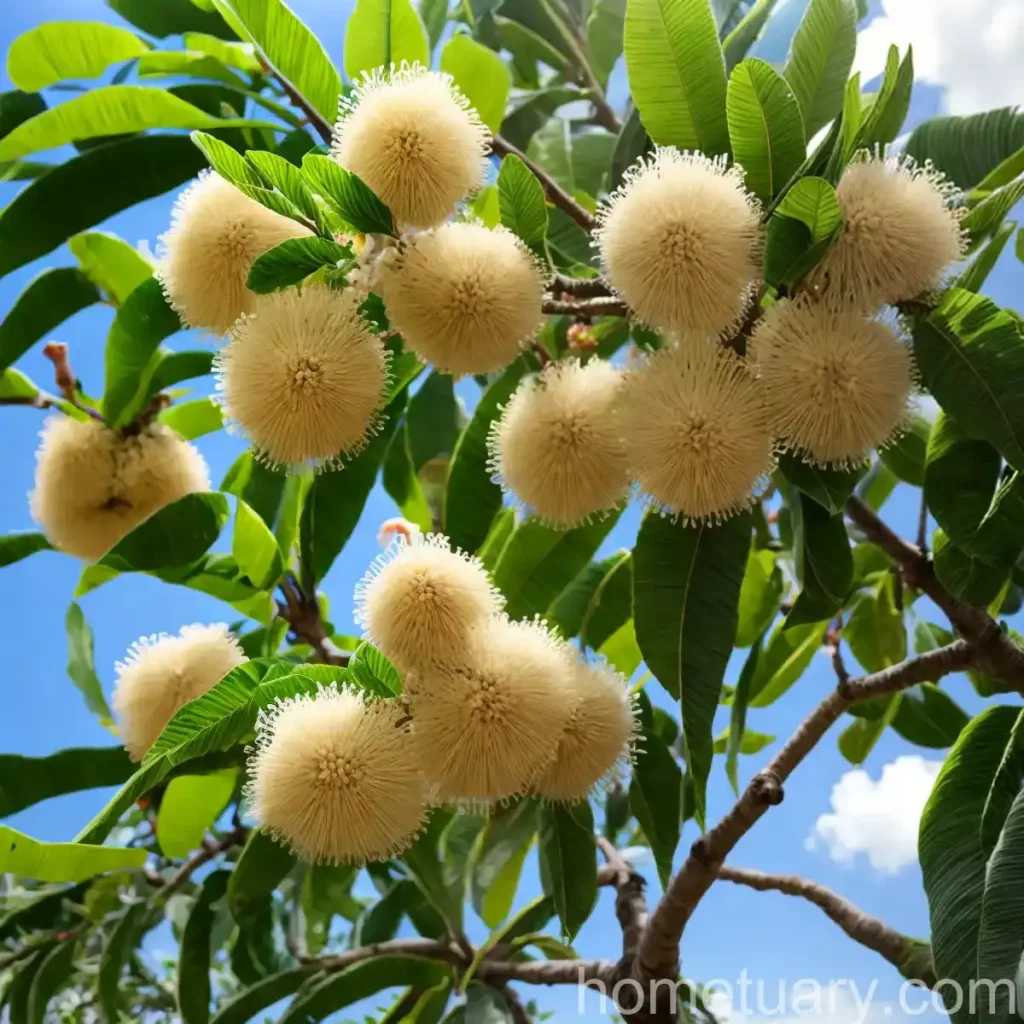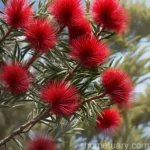Pineapple Guava (Acca sellowiana): A Comprehensive Guide for Plant Enthusiasts
The pineapple guava, scientifically known as Acca sellowiana, is an intriguing and versatile plant with a plethora of uses and benefits. Whether you are an experienced horticulturist, a homeowner with a green thumb, or simply intrigued by the beauty and functionality of plants, this comprehensive guide will provide you with ample knowledge and insights into the world of pineapple guava.
What is Pineapple Guava (Acca sellowiana)?
Pineapple guava, also known as feijoa, is an evergreen shrub or small tree native to South America, particularly Brazil, Uruguay, Paraguay, and Argentina. It belongs to the Myrtaceae family and is renowned for its striking foliage, edible fruits, and fragrant flowers. The plant is valued for both its ornamental appeal and its culinary uses, making it a compelling choice for gardeners and landscaping enthusiasts.
Key Takeaways – Pineapple Guava (Acca sellowiana)
Before delving into the specifics of pineapple guava, let’s explore some key takeaways that highlight its diverse characteristics and applications:
-
Ornamental Appeal: With its glossy, leathery leaves and showy, often edible, flowers, pineapple guava serves as an attractive ornamental plant in gardens and landscapes.
-
Edible Fruits: The plant produces flavorful, aromatic fruits that are not only delicious when consumed fresh but also lend themselves well to various culinary applications.
-
Low Maintenance: Pineapple guava is relatively low maintenance, requiring minimal care once established, making it an ideal choice for both novice and seasoned gardeners.
-
Wildlife Habitat: Beyond its human-centric uses, pineapple guava provides a habitat for wildlife, attracting birds and other beneficial creatures to the garden.
With these key takeaways in mind, let’s explore the various facets of pineapple guava, from its cultural requirements to its propagation and maintenance.
Culture
Water
Pineapple guava is known for its resilience in diverse water conditions, making it relatively drought-tolerant once established. When first planted, it benefits from regular watering to encourage root establishment, after which it can thrive with minimal supplemental irrigation. During periods of prolonged drought, especially in warmer climates, providing some additional moisture can aid in fruit development and overall plant vigor.
Sunlight
In terms of sunlight requirements, pineapple guava thrives in full sun to partial shade. Adequate sunlight exposure is essential for promoting healthy growth, flowering, and fruit production. However, it also displays adaptability to varying light conditions, making it suitable for different garden settings.
Fertilizer
When it comes to fertilization, pineapple guava benefits from a balanced, slow-release fertilizer applied in spring. Incorporating organic matter into the soil can also enhance its nutrient content and structure, contributing to the long-term health of the plant.
Soil
The plant thrives in well-draining, loamy soil with a slightly acidic to neutral pH (6.0-7.5). While it is adaptable to different soil types, ensuring good drainage is crucial for preventing waterlogged conditions, which can negatively affect the plant’s health.
Pruning
Pineapple guava responds well to pruning, which can help shape the plant, promote air circulation, and encourage fruit production. Pruning is typically conducted after the flowering period, allowing for the removal of dead or damaged growth and the shaping of the plant to the desired form. It is advisable to avoid excessive pruning, especially during the active growing season, to prevent potential stress to the plant.
Propagation
The propagation of pineapple guava can be achieved through various methods, including:
-
Seed Propagation: While feasible, seed propagation is less commonly practiced due to variability in seedling quality and the relatively long time it takes for seed-grown plants to mature and bear fruit.
-
Cutting Propagation: Propagating pineapple guava from semi-hardwood cuttings taken in late spring or early summer is a widely employed method. Utilizing a rooting hormone can enhance the success rate of cuttings.
-
Layering: Air layering is another effective technique for propagating pineapple guava, where a portion of a branch is induced to produce roots while still attached to the mother plant.
Container Popularity
Pineapple guava’s adaptability to container cultivation adds to its popularity, making it well-suited for patio gardens, urban spaces, and areas with limited garden real estate. When grown in containers, it is essential to ensure proper drainage, adequate sunlight, and regular watering to support healthy growth and fruiting.
Common Diseases
Pineapple guava is generally resilient to many common diseases, particularly when grown in favorable conditions. However, it can occasionally be susceptible to certain issues, including:
-
Anthracnose: This fungal disease can manifest as dark, sunken lesions on the plant’s foliage and fruit, particularly during periods of extended wetness.
-
Rust: Characterized by orange or brownish powdery spots on the leaves, rust can impact the plant’s vigor if left unaddressed.
Disease Diagnosis
Early diagnosis of potential diseases is crucial for effectively managing and preventing their spread. Regular inspection of the plant for symptoms such as abnormal leaf discoloration, lesions, or unusual growth patterns can aid in prompt intervention.
Common Pests
Pineapple guava is relatively resistant to most pests, with few that pose significant threats to its overall health. However, it can be susceptible to:
-
Scale Insects: These tiny, sap-feeding insects can cluster on the plant’s stems and foliage, impacting its vitality if left uncontrolled.
-
Aphids: Aphids may occasionally infest pineapple guava, particularly in new growth, leading to distorted leaves and potential stress on the plant.
Botanist’s Tips
Incorporating pineapple guava into your garden or landscape can be a rewarding endeavor, and here are some valuable tips for ensuring its success:
-
Choose the Right Variety: Select a pineapple guava variety that aligns with your specific climate, space, and intended uses, whether ornamental, fruit-bearing, or a combination of both.
-
Provide Adequate Care: Although adaptable, pineapple guava benefits from consistent care, including regular watering, proper fertilization, and appropriate pruning to maintain its health and productivity.
-
Monitor for Pests and Diseases: Routinely inspect the plant for signs of pests or diseases, addressing any issues promptly to mitigate potential damage.
-
Promote Pollination: To enhance fruit production, consider planting multiple pineapple guava plants to facilitate cross-pollination, particularly if you desire a bountiful harvest of delectable fruits.
Fun Facts
Exploring some intriguing and lesser-known facts about pineapple guava can further enrich your appreciation for this remarkable plant:
-
The flesh of the fruit is not only flavorful but also nutrient-dense, containing essential vitamins, antioxidants, and dietary fiber, making it a valuable addition to a healthful diet.
-
The flowers of the pineapple guava are not only visually striking, with their vibrant, showy petals, but also emit a delightful, sweet fragrance, attracting pollinators to the garden.
-
Beyond its culinary allure, pineapple guava’s evergreen foliage and attractive form lend themselves to various landscaping applications, from hedges and borders to specimen plantings.
Links to External Resources
For additional insights, information, and resources related to pineapple guava, consider exploring the following external links:
- Pineapple Guava: A Nutrient-Rich Fruit
- Cultivating Acca sellowiana: Tips for Successful Growing
- Feijoa Varieties for Your Garden
- The Culinary Delights of Pineapple Guava
- Managing Pests and Diseases in Pineapple Guava
In conclusion, the pineapple guava (Acca sellowiana) stands as a captivating and versatile plant that harmoniously integrates ornamental beauty, culinary allure, and ecological value. Whether you are drawn to its delectable fruits, enchanting flowers, or overall aesthetic appeal, incorporating this remarkable plant into your garden or landscape can yield a multitude of rewards. By understanding and adhering to its cultural requirements, embracing its botanical marvels, and attending to its maintenance needs, you can relish the abundant benefits and delights that the pineapple guava has to offer.















